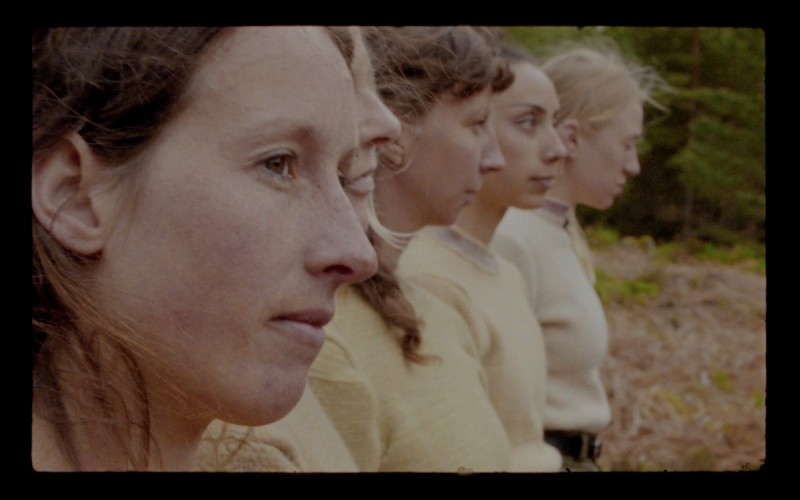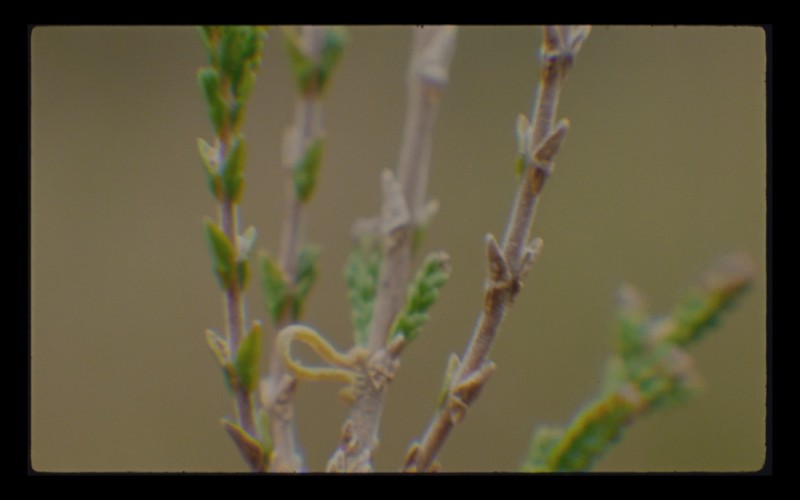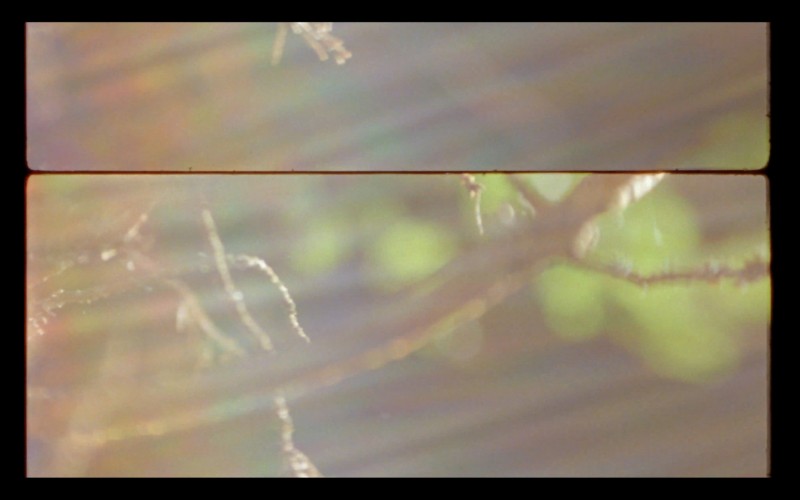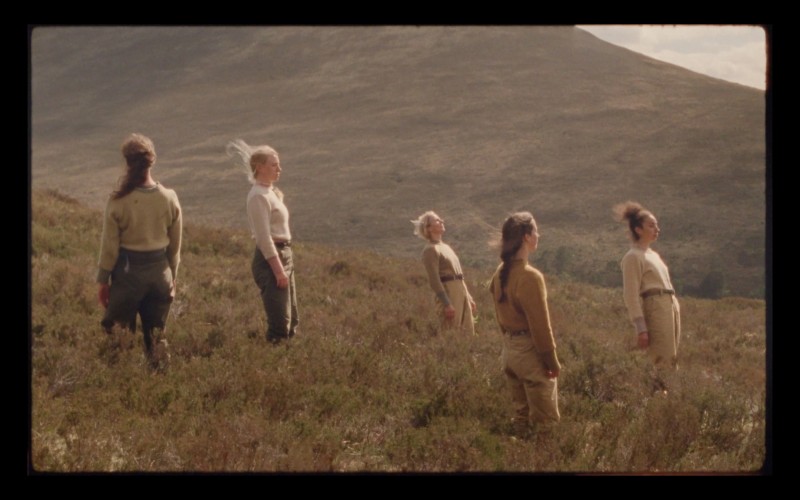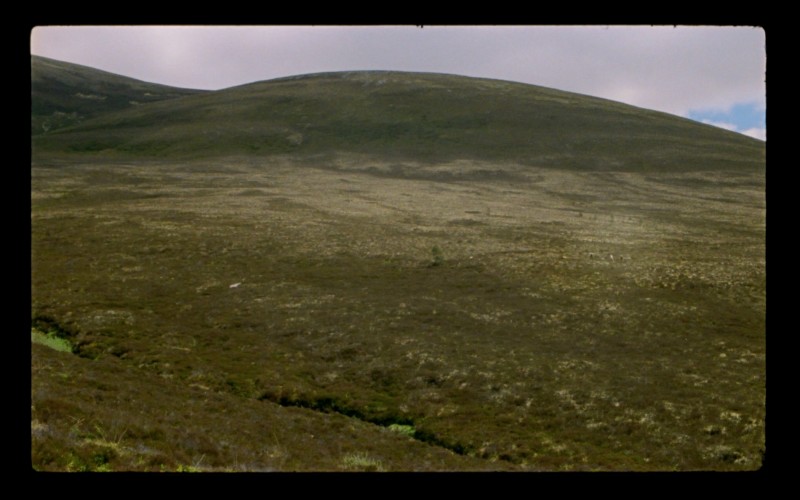Introduction
In 1999 I relocated my life from Edinburgh to Newtonmore in the Scottish Highlands. The decision to move was entirely based on the village’s proximity to mountains and the possibility of adventure. In Edinburgh I was always suffering from ‘a reverse altitude sickness’ as the author Robert MacFarlane talks about, that is, the urgent need to be high up. In a continual search for sublime experiences in the Highlands of Scotland, I had already covered a good deal of ground in the Cairngorms when I made the move north, but I was determined to have easy access to high and remote places without all the driving from the central belt of Scotland. As a result of this migration I’ve explored, climbed, walked and camped all over the Cairngorm mountain range over a period of 20 years and came to appreciate and respect the wild places it hid. I’ve sometimes walked all day in this range and never met a human soul. I found total peace on the massive shoulders of Bheinn a’ Bhuird, startled a flock of Dotterel in pouring rain on Braeriach, looked down on impossibly large herds of Red Deer at dusk from the boulder fields of Cairn Toul. I’ve watched Ptarmigan spring courtships on cornices of Lochnagar; almost been frost bitten on a belay stance while climbing a gully of Coire an t-Sneachda; rubbed ice off my face almost lost on Cairn Gorm only metres from the summit; navigated in whiteout conditions to the summit of Sgorr Goaith to watch the cloud clear over Glen Einich. I’ve sweated my way up Ben Macdui fighting flies across the windless summit plateau and sat in silence on The Cairnwell with only a hungry Snow Bunting for company. I’ve been caught out at an April sunset on Ben Avon trudging foot-sore back to my car in the dark, and watched summer sunrises camped near the outflow at Etchechan. I’ve wedged myself frightened between granite blocks working my way up the crags at Coire an Lochain, sat for hours on the rocky ‘barns’ at Bynack Mor, and smelled the intense summer scents of Rothiemurchus pines watching ants wrestle on a rock. I’ve done all this and more and had never read Nan Shepherd’s “The Living Mountain” until relatively recently. Though I was always aware of this seminal book I had avoided it for the entirely ungrateful reason that I thought it would be old fashioned in its prose style (which it wonderfully is).
It wasn’t until 2008 when I started to study my Masters degree at the Centre for Mountain studies in Perth that I started to dig into the natures of the links between art culture and wild land culture. I read the inspiring Aldo Leopold and Jim Crumley as well as more academic texts on landscape art in Scotland. Books like ‘Power and Landscape’, and ‘Decolonising Nature’ consumed me. I talked with the artists Hamish Fulton, Gavin Lockhart and Alexander Maris, and looked carefully at the links between romantic ideas of Scottish landscape and the living landscape of my Highland home. I thought a lot about the human dimension of this place and its relationship to a particular ecological system. As it was in my field of arts practice I spent a lot of time exploring choreography and movement in this environment as a way of describing these various links. I collaborated and directed film projects sited in this place I called home, particularly exploring ideas of wildness and human intervention and environment. I connected with visual artists and writers, musicians and dance artists and came to a few fairly indistinct conclusions and a lot of questions. Then, at last I finally came to the “geo-poetics” (as McFarlane suggests it is) or ecological prose of Nan Shepherd. In the middle of all this research I undertook my Summer Mountain Leader training at Glenmore lodge in the Cairngorms. This course ultimately became the spur for the subject of my MSc dissertation but also created a general shift in my awareness that what happens in the mountains is not for many people the soul-enriching experience that can then be absorbed in to everyday life but an adrenalin quest by (yes, mainly) men to be talked about in the office on Monday morning. Nan Shepherd, I realised was one of the antidotes and counterweights to this depressing feature of the mountain community in my life. By the time I was unable to climb mountains after 2011 when disability forced me into more sedentary activities, I realised the true value of ‘The Living Mountain’. Now when I read this book I am transported back (albeit to an ecological system described that was somewhat richer) and I understand this intensity of a sublime timeless world Shepherd describes in a wild landscape through my own memory of it. The way she places a sensual and sensory ecology of lived experience at the heart of her text is something that resonates with my life in the Scottish mountains. Having also spent almost half my life around dance artists and making dance films, I also recognised a deep and strong overlap with this embodied arts practice and the text. It was a revelation but also something that I had always inherently known in my body and subconsciously. As Shepherd writes “It is therefore when the body is keyed to its highest potential and controlled to a profound harmony deepening into something that resembles trance, that I discover most nearly what it is to be. I have walked out of the body and into the mountain.” Also she writes “The body is not made negligible, but paramount. Flesh is not annihilated but fulfilled. One is not bodiless, but essential body.” That I should connect contemporary dance practice with this wild environment was no longer such a strange idea. I’m just sorry I came to ‘The Living Mountain’ so late in my journey.
Into The Mountain
It was with interest then that in 2019 I heard about a performance project called ‘into the mountain’ led by the choreographer Simone Kenyon, exploring the eco poetics and physical presence of Shepherd in the Cairngorms through her text. I became even more interested on hearing that British Film-maker Lucy Cash was making a new work with Kenyon based on this project. Shepherd is said to have written to her friend the author Neil Gunn ‘Don’t you loathe having your work over-praised?’ so I will try not to over praise Cash’s films but if you do not know her particular cinematic vocabulary then I would urge you to seek out her back catalogue.
Much like Macfarlane’s problems with writing about Shepherd’s book (in his introduction to my copy, he states “The Living Mountain is a formidably difficult book to describe”) it has taken me months to get to grips with “How the Earth Must See Itself”. Just when I feel I can say something about it the thought seems inadequate and the words floats off like a balloon always just out of reach. The ethereal quality of the work quietens thinking and has the effect of walling off my ability to critique it. This paragraph from ‘the living mountain’ describing the Cairngorm plateau caught my attention and could equally apply to the film.
“We must go back, and back again, to look at it, for in the interval memory refuses to recreate its brightness. This is one of the reasons why the high plateau where these streams begin, the streams themselves, their cataracts and rocky beds, the corries, the whole wild enchantment, like a work of art is perpetually new when one returns to it. The mind cannot carry away all that it has to give, nor does it always believe possible what it has carried away.”
How the Earth Must See Itself
I will focus on the film as a stand-alone work itself rather than comment on the performance project created by Kenyon that had its own life. The two are closely linked but most people who see “How the Earth Must See Itself” will have little awareness of the live work or indeed, the location itself. Will audiences feel the sensory intensity of ‘The Living Mountain’ through this film? How should we view this work in the larger contexts of performance on screen and experimental cinema? Can we separate this work from human geography, Scottish history and eco politics? What should we take from the work as a message if anything?
“How The Earth Must See Itself” has many layers. It has all the elements of an abbreviated documentation of a site specific live performance. It could even be viewed as a promotional film for Kenyon’s creative vision. The site of the work is above Glen Feshie in the small nature reserve below a popular walkers destination, the summit of Sgorr Goaith. The tumbling water course of Allt Ruadh runs from the head of the coire down to Glen Feshie through mature Scots Pine, Larch and Birch trees. I know this as a magical and beautiful place, and the site of visible woodland regeneration over the past two decades. After a steep climb the wide path levels off you emerge into the wide coire, the woodland slowly gives way to open heather moorland and dwarf shrubs. In summer it feels wild and rich in its biodiversity. The air is filled with the smells of pine needles, peat and heather, and the sounds of Buzzards, Cuckoos, Chaffinches and insects. The film hints at this richness in close up shots of a beetle and caterpillar, the heather and mosses.
Nan Shepherd is present through narrated fragments of text from the book against a background of the sounds of the place and at points underscored by the specially composed choral music of Hanna Tuulikki. In this world five women, dressed in a style that hints at 1930’s mountain wear of natural fibres and muted colour; move slowly together, stand almost motionless, fall spiralling backwards to the ground, ascend through trees and deep heather. We see bare feet massaging Sphagnum Moss, hands caressing the flora and dipped in flowing water. All the while a soft hypnotic voice speaks to us from ‘The Living Mountain’. There is choreography and humanity, there is poetry and cinema, there is an intensity and sensitivity of experience, but somehow I feel a little distanced from it like I am being pushed away more than drawn in. I put this down to the flagged-up use of 16mm film as the main cause of this. The use of film is a good choice of medium as it points to a different age but the editing in of split screen sections, suggesting the film has slipped in its projection, along with the use of film leaders and over exposed film tails, pulls me away from this natural site and the “geo poetic”. It places me firmly back in the world of the human and a mediated space of particular technology.
In the contexts of performance on screen and experimental cinema it’s a beautiful work. It is artful and highly considered in a way I would expect from Cash. She has a sensitivity to the quirks of humanity and celebrates this in a way that engages with the emotions. You feel the physical qualities of the women’s movement in the landscape, and rich textures and light flood through her cinematic vocabulary. In this film I feel hints of the tactile spaces explored by Maya Deren through the portrayal of an otherworldly place that Cash helps to draw out, and occasional sense of surreality in the presentation of this quintet of women performing ritualistic and repeated movements.
There is another context in which to view this work and that is through the lens of the Scottish Highlands as a contested political landscape. Here is a region of the world like few others. This landscape has inspired romantic tales and tribal wars. It has also fed feudalism and privilege, exploitation and savage ethnic clearance, ecocide and ecological neglect, theft and greed, and lots and lots of Art and stories. This film I suppose, doesn’t attempt to address any of this explicitly and certainly Shepherd doesn’t acknowledge the issue in her book from my reading. Does the film or the book help or hinder our understanding of the ecological and economic problems of the Highlands that have directly resulted from poor land management and absentee ownership? I think this depends on the knowledge of the viewer. If you are based in the USA and are on season five of the film series ‘Outlander’ then the work could reinforce perceptions of this landscape as a source of romantic escape which is, I think, somewhat unhelpful and unhealthy for the environment of Scotland. If you have some knowledge of the political and ecological histories of the Highlands then this film provokes a different reading of place and people, a reading that could underscore the relationship between the human body and mountain ecology. When I read ‘The Living Mountain’ though, it reminds me that each successive generation of walkers by default will inevitably suffer from bio amnesia. It reveals that the ecological world of Shepherd was a richer and more diverse place than we experience now and that Rachael Carson’s vision of a ‘Silent Spring’ is slowly coming true. Despite the richness of the visual imagery of Scots Pine and wild land, Cash’s film for me sadly highlights this depressing fact. Overgrazing by Red Deer and sheep; excessive use of chemicals and strip burning; the widespread bulldozing of 4×4 vehicle access tracks for driven grouse shooting, along with raptor persecution and mountain hare slaughter, have created a depleted and damaged ecology. I see it everywhere in the uplands of Highland Scotland and no amount of poetry can overcome this.
As I was finishing writing this article I travelled north for a family celebration and stayed at a hotel on the south side of Loch Ness. It was the classic Victorian hunting lodge style building we can see scattered across the whole of the Highlands that accommodate the thousands of tourists visiting the region. Overlooking the loch with views to Meall Fuar-mhonaidh, the hotel is in a beautiful site on a steep hillside surrounded by a mature forest of Spruce and Larch. The early spring dawn chorus was so intense I opened the windows, despite the wet weather, to bathe in it. As I often do in these hotels, I scanned the walls for the art and design choices the owners make. Inevitably, in the foyer, stair well and lounge bar I find a collection of landscape paintings in amongst the clutter of hotel notices and tourist posters. A man dressed in tweeds with a shot gun under his arm stands with his back to us, a dog sits by his side while he gazes out at the mountains laid out in front of him. A large Red Deer stag with an alert curious expression stares at us against the back drop of a steep highland glen in autumn colours. A man struggles through drifts of snow carrying a bale of hay surrounded by a flock of sheep. I expected nothing less. This is what most people want of their Highland getaway. It is romantic, political, feudal, and ultimately it is theatre. I realised then that the ambition of Cash’s film frustrates me. It shies away from highlighting and acting as counterweight to this ubiquitous ‘Highlandism’. The film avoids providing viewers with, I believe, the necessary contrasts to the landscape romanticism that overwhelms visitors to the area. It is hard for me not to critique the work in this context.
Back in the summer of 2009 I decided it was the right time to do my Summer Mountain Leader training. I had an idea that I could develop a new career path that would compliment the Masters degree in Managing Sustainable Mountain Development I was studying. What actually came out of this training was the idea for my dissertation that looked at the role of mountain leaders in educating people about what it means to be ‘in’ nature. My 4 days of training was led by a highly experienced ex-army mountain leader. My group consisted of fourteen men and one woman. I realised pretty quickly that the woman was going to be the outsider as she was older and had a strong foreign accent. The whole experience was fairly dis-spiriting as I’ve always tried to actively avoid male dominated situations where machismo is a default mode. I was the only member of the group openly willing to share a tent with the woman on the expedition segment of the training. She didn’t have a string of hard climbing ascents to talk about, or she didn’t willingly share that experience in the group. I was disturbed by the lack of inclusion displayed by many of the party including the course trainer. My MSc Dissertation research that followed did little to change the view I came away with, that mountaineers were not interested in creating an inclusive and diverse community in a wild environment to be explored, appreciated and understood by anyone wishing to go there. Yes it is of course, for many, a place of escape from urban stresses but the lessons the mountains teach us are, it seems, rarely transported back to the city. John Muir’s wilderness manifesto of understanding that everything is connected to everything else, is not learned.
“How The Earth Must See Itself” purposefully portrays its own type of homogenisation in the choice of women performers, and it feels consciously alien to the normative world of modern day mountaineering. I appreciate this explicit portrayal and I just wish other critical issues were addressed, even implicitly. I think if we can take anything from the film, it’s the claiming of a particularly male-dominated domain by women. As Nan Shepherd did in her own way, the performance and this film plant a flag in this wild and physically challenging place that says this space is for women. Also, that adventure and exploration are not necessarily about adrenalin and testosterone but about listening and feeling and observing and taking time to understand and absorb what it truly means to be ‘in’ the mountains.
Nan Shepherd shows us that a different appreciation of the mountains is possible and Cash’s film of Kenyon’s project illustrates this appreciation of community and deep ecological awareness. The mountains are places of outer sensation and inner reflection, of inspiration and interface with nature and elements.
We should celebrate this gift.
Simon Fildes – April 2020
Appendix
How The Earth Must See Itself is a short film by Lucy Cash and Simone Kenyon with extracts from The Living Mountain read by Shirley Henderson. It was produced by the National Theatre of Scotland and Scottish Sculpture Workshop. Based on the book The Living Mountain by Nan Shepherd and performance project Into The Mountain by Simone Kenyon. Performers: Jo Hellier, Claricia Parinussa, Caroline Reagh, Keren Smail and Petra Söör. Composer: Hanna Tuulikki. Cinematographer: Peter Emery. Sound Designer: Pete Smith
*All images used in this article are from the film ©Lucy Cash
